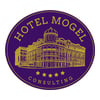If there’s one phrase to remember for how AI and spa will intersect, it’s ‘technology-adjacent therapies’. That is, for our industry where human-to-human contact is ever-so-centric to guest satisfaction, it’s not that automation will supplant practitioners but that these contemporary tools will offset the undesirable, repetitive tasks to augment the experience. Hence, hoteliers and managers shouldn’t necessarily look to how AI can boost the guest journey but to their own teams’ experience, otherwise known as the software’s ‘end users’.
Consider an example from an ultraluxury Hawaiian hotel, Sensei Lanai, a Four Seasons Resort. This property’s ‘Thermal Body Mapping and Massage’ uses sensors to detect sources of bodily tension for the therapist to then interpret during the treatment and enhance the patient’s physical recovery. Priced at $750USD for 2.5 hours, it’s high-tech and ripe for having an AI underbelly within its proprietary imaging technology, but the core reason for why it’s so beloved by guests will always be the practitioner’s dedication to personalized care.
While this case represents one end of the spectrum for which we can also lump in other diagnostics like epigenetic age testing, multicancer early detection or computational nutrition, the most common and out-of-the-box applications for AI in spas will be the workhorse tools that can reduce administrative busywork so that each end user – be it a receptionist, manager, masseuse, healer or therapist – can devote even more of their time and energy to delivering exceptional experiences for their clients.
To this end, here are three flavors of applications with the AI landscape to consider based on either machine learning (ML) or large language models (LLMs):
Generative AI (genAI) and generative pretrained transformers (GPTs): These are the tools built on LLMs that have been receiving much of the hype over the past two years. An easy use case is ‘summarization’ wherein a genAI tool might read through all the information known about a guest and produce the top three immediately actionable insights for spa personnel.
Customer data platforms (CDPs): Often fueled by an underlying engine of AI-driven automation, these systems are becoming critical for a hotel’s tech architecture because of their ability to connect siloed data then merge it together – as well as perform deduplication or identity resolution – for a complete profile on the guest’s preferences and for segmented marketing.
Multivariate (A/B) testing: This application of ML presents customers with different options then uses the observed responses to create business models. For instance, upselling platforms can send out a spa newsletter to incoming guests two days out from arrival or one week out, and then measure which of these two resulted in more bookings to inform future promotions.
Adam MogelonskyHotel Mogel Consulting Limited
Wellness and well-beingChatbots, Robotics & AI




